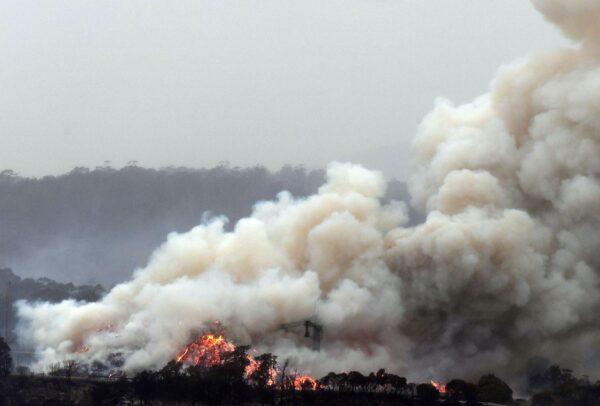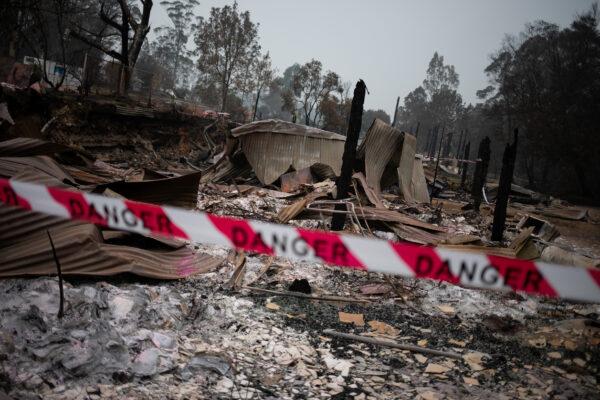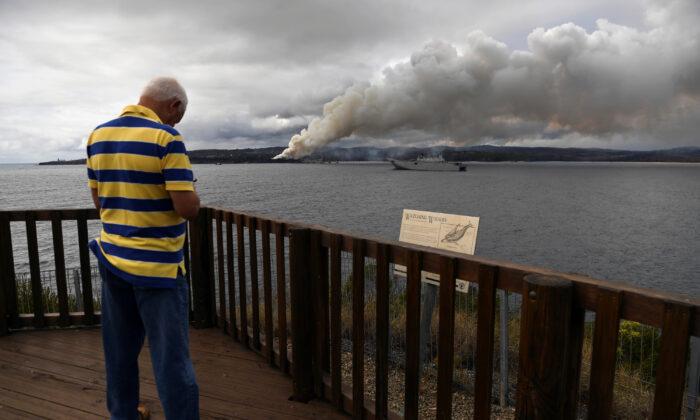Australian authorities issued new warnings, and evacuation notices across the country’s densely populated southeast on Thursday as a return of hot weather fanned massive bushfires threatening several towns and communities.
A disaster notice in Victoria state, already in place for the past week, was extended by two days, and people in danger zones were told to leave. In neighboring New South Wales state, authorities advised residents to prepare for worsening weather conditions on Friday.
“These fires are absolutely still moving, still growing in our landscape, and they pose significant risk to communities,” Victoria Emergency Services Minister Lisa Neville said in a televised briefing.
Twenty-six people have died, thousands have been made homeless, and thousands of others have had to evacuate repeatedly as the monster fires have scorched through more than 10.3 million hectares (25.5 million acres) of land, an area the size of South Korea.
Authorities have warned that the summer fire season, spurred by high temperatures, strong winds, and a three-year drought that has left bushland vulnerable, will continue until the country experiences substantial rainfall.

The national weather agency confirmed fears there was no sign of that happening in the next few months as it released its annual report, which also showed that 2019 was Australia’s hottest and driest year on record.
Many towns were without power and telecommunications, and some were running low on drinking water supplies. The smoke has blanketed Sydney, Melbourne, and Canberra, and drifted as far as South America.
“I listened to the advice that if you don’t need to stay, then don’t,” said David Gatrell, 72, laying out a tent next to about 20 vehicles at a sports ground in Merimbula, a coastal town about 60 kilometers (37 miles) from his home at Towamba.
“There are four roads out of the village, and three are blocked,” Gatrell told Reuters. “There’s only one way out, and I don’t want to take my chances.”
Parts of Kangaroo Island, a wildlife-rich tourist destination off the country’s southeast coast where Prime Minister Scott Morrison on Wednesday made a plea for foreign tourists not to be deterred by the fires, were again evacuated on Thursday. Wildfires have already destroyed One-third of the island.

The following are some highlights of what is happening in the bushfire crisis:
- Victoria state officials said “strike teams” of firefighters were being sent into high-risk areas. Still, new blazes could start anywhere, given a forecast for extreme heat and potential lightning strikes. Officials credit the evacuation of tens of thousands of people in recent weeks with keeping the death toll from the fires low.
- The Australian Bureau of Meteorology reported that the country had only 6 percent of its typical annual rainfall last year. At the same time, daytime temperatures were more than 2 degrees Celsius (3.6 degrees Fahrenheit) above normal: “Australia’s getting warmer, the fire season’s getting longer and the severity of the fire weather during that season is getting more frequent and severe.”
- New South Wales state on Thursday announced new funds of A$1 billion ($686 million) to rebuild infrastructure and communities affected by the bushfire.
- Mining magnate Andrew Forrest pledged A$70 million ($48 million) to a bushfire recovery package, including a volunteer army of more than 1,000 people from the mining and agriculture sectors to assist in rebuilding fire-hit regions.
- Most of the fires that have devastated much of Australia’s east coast occurred in New South Wales, where 1,870 homes have been destroyed so far, authorities said.
- Prime Minister Morrison, on Wednesday, urged foreign tourists not to be deterred by deadly wildfires, fearing a lack of holiday-makers could hurt the economy. Some typically crowded resorts have already turned into ghost towns.
- Moody’s Analytics said the cost of the fires could easily surpass that of the deadly 2009 Black Saturday fires that destroyed 450,000 hectares of land at an estimated cost of A$4.4 billion ($3 billion).
- Prime Minister Morrison has pledged A$2 billion ($1.4 billion) to a newly created National Bushfire Recovery Agency.
- About 100 firefighters from the United States and Canada are in the country to help local services, with another 140 expected to arrive in the coming weeks.
- The Malaysian government has approved a plan to send 65 fire and rescue personnel to help efforts in Australia. The deployment is awaiting Australian government approval.
- Ecologists at the University of Sydney have estimated the number of animals killed or injured in the fires to 1 billion.
- The fires have already emitted 400 megatonnes of carbon dioxide into the atmosphere and produced harmful pollutants, the EU’s Copernicus monitoring program said.
- The smoke has drifted across the Pacific, affecting cities in South America, and may have reached the Antarctic, the UN World Meteorological Organization said.






Friends Read Free